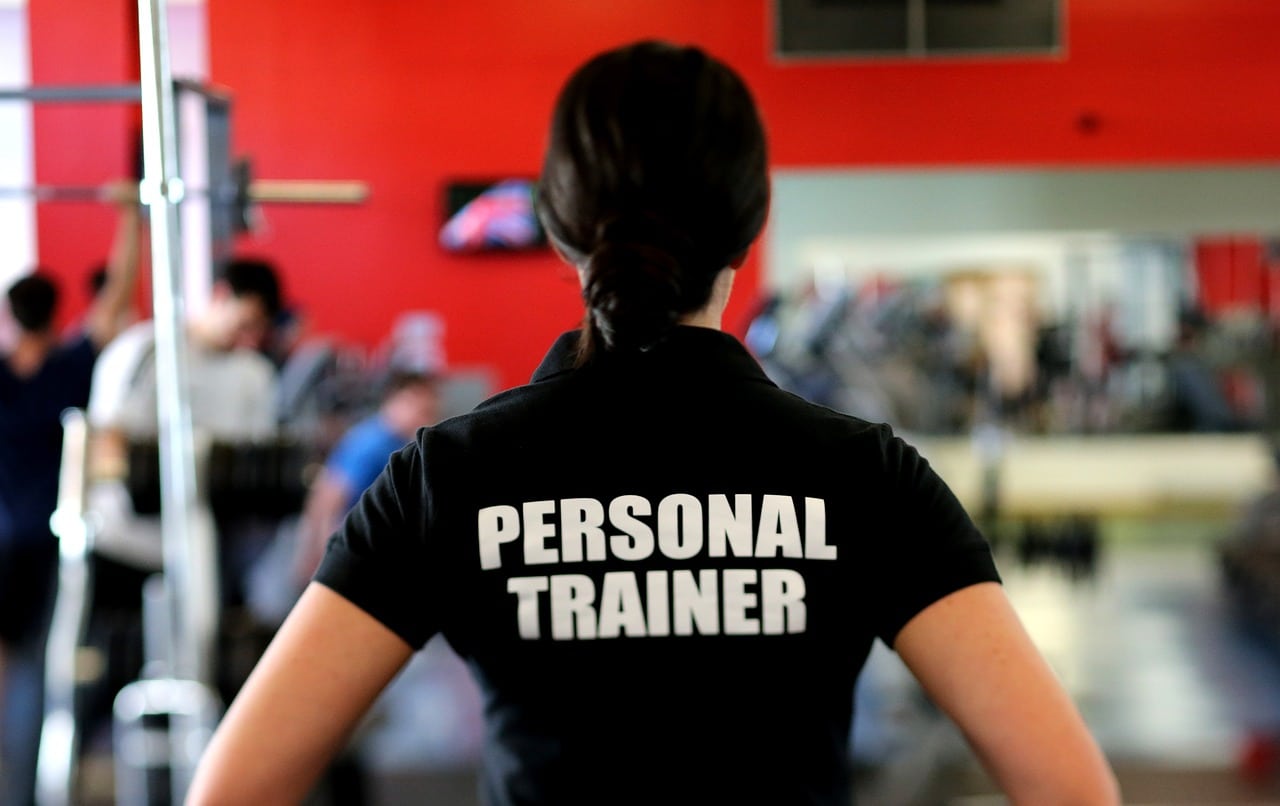What made you want to become a fitness and nutrition professional? It probably wasn’t your excitement about marketing your business. But to be a successful business owner and help your clients reach their goals, you need clients. In this article, we help you learn how to craft marketing messages that feel and sound like you so you can attract your ideal clients.
Know Your Niche
What content do you want to provide? The next tip focuses on who you want to serve, but knowing your niche is paradoxically more about you. What services do you want to offer and how? Will you work mostly online, mostly in-person, a bit of both? Do you prefer working 1:1 only or do you like the group context for your clients too? Determining your niche means zeroing in on what you want to offer your clients and how you want to provide it.
Create Persona Profiles
After clearly defining what you offer, start clearly defining your ideal clients. Get as detailed as possible. You can even ask fun questions such as “What does this person do on a Friday night?” or “What is this person’s dream vacation?” Think about their lifestyle, attire, dreams, goals, inspiration, education level, fitness level, or even their favorite color. The more detailed you can get, the easier it will be for you to speak to this person in your marketing and get them to buy your services.
Engage and Keep Social Media Social
The worst thing you can do on social media is to open an account and neglect it. Instead, be strategic about which channel you use. Choose a platform that aligns with your target market. For example, choose Facebook if you want to market to moms, but choose Instagram if you want to market to a broader audience, or choose LinkedIn if you want to market to companies or business professionals.
Whichever platform you choose, use it. The trick for most platforms is regular content. Even if you only post once a week, be consistent. If you have a blog where you write articles about the work you do and the clients you serve, post links to those blogs as your content.
Also, be active on your social media channels. Interact with other professionals you admire and follow them. Invite people to follow you and comment on your posts. And when people do comment, reply to them. Build relationships on these platforms that you can bring off the platform and into your work. Use them as networking tools.
Know Your Brand Voice (and Use It!)
When you are crafting messages and being active and engaging on social media, use your brand’s voice. How do you know your brand’s voice? Write a list of all the ways and times you communicate with clients, such as saying “Hi,” expressing regret, being excited about your service, offering encouragement, holding clients accountable, providing customer service, or saying “Hi” the second and third time. After all, how you greet someone on the first date is usually not how you greet them on the second, third, or fourth date.
Once you have your list of different communications in column one, add a second column. Write down how your brand communicates the message. Adopt the persona of your brand. Are you saying, “Rock on!” or more like, “You did a great job!” to motivate and celebrate? At first touch, do you give a booming hello: “HEY! How’s your health today? What did you eat for breakfast?” or are you more subtle, “Hi there! Nice to meet you. I can help you reach your nutrition goals. Let’s chat!” Think through how your brand greets clients, continues talking to them and getting to know them, how it congratulates them, holds them accountable, and stays in touch.
Finally, add a third column to your lists. In this column, write down how you do not say things. Explicitly thinking through and writing down how your brand does not talk more thoroughly defines your brand’s voice and identity. This part of the exercise is especially helpful to distinguish yourself from your business and its brand; personally, you might use the tone and language in this column, but your brand does not. Clearly stating what you do not say helps reinforce your brand identity and adds to the credibility of your services.
Whenever you are unsure of how to say something on social media or in a marketing campaign, come back to your cheat sheet! You already have the words written. Don’t be afraid to rely on them and use them.

The Essential Business Course for Health and Wellness Entrepreneurs
Gain the skills needed to build and run a thriving, lucrative health and wellness business.
Check Out the Competition
See what other health professionals are doing. Sign up for their freebies. Join their newsletter lists. Peruse their websites and social media feeds. Take note of what you do and don’t like and gain insight and inspiration from what you observe. How do their messages make you feel? Which one would you hire? Which ones would your marketing personas hire? These are the ones to emulate and use for inspiration. Take note of the details such as fonts, colors, timing, and the actual messages themselves. They can serve as tactical examples for you.
Be Aware of the Trends
Knowing the latest marketing trends is very helpful, but so is knowing when not to worry about them. Ask yourself if the trend fits within your marketing personas. For example, in the summer of 2019, the latest Instagram trends are light colors and photo overlays. If that sounds like a foreign language to you, don’t worry about it. Unless you are marketing to females in their teens and 20s, this trend might not be worth the hassle to follow.
Instead, pick up on trends such as how video with sound and colorful imagery gets better results and podcasts are the new blogging. Perhaps instead of a blog, you make a podcast to share your information and post recaps and links to stream on your social media feed. That would be a way to stay trendy, be relevant, and do what works for you and attracts your ideal clients.
Highlight Your Benefits and Mitigate Risk
Now that you know what you have to offer, who you want to offer it to, and which channels you want to communicate through, you need to know what to say. A handy rule of thumb is to highlight your benefits. Tell people the benefits of hiring a nutrition professional and how it will positively impact their lives. Get specific about your services too, such as the ease of working with your online portal or the comfort of 1:1 sessions to get undivided attention.
If you aren’t sure what the benefits are, ask for them! Reach out to colleagues and clients and ask for testimonials about you and your work. Nothing can compete with a positive testimonial.
In addition to highlighting the benefits of your work and working with you, try to mitigate risk for your client. That doesn’t mean offering a return policy. It does mean instilling confidence in their purchase by providing proof of your work. Testimonials work really well here, too, and so do case studies. Highlight successful client stories that exemplify your client personas.
Don’t have any clients yet? That’s okay. Stick to your benefits and mitigate risk through a different appeal. Highlight your credentials and knowledge to present yourself and your services as credible.
As you work with clients, don’t be shy about asking for testimonials. They might be lurking in emails already; anytime a client offers praise or positive sentiments, flag that email. When you finish your work together, reach out and ask for a testimonial. Include the words they already said and ask if you may use them on your website or if they would like to add to them. You can also send out a follow-up survey that asks for feedback to garner testimonials.
Keep Messages Simple
Unless you are writing blog posts or having conversations on a podcast, keep your messages simple and to the point. If an email gets to be too long or you have too much text on your website, your message will get lost. Provide links to contact you or schedule a discovery call so that clients can gain more information and get in touch. Give them just enough to spark their curiosity so they want to take that next step.
Remember, marketing copy can be a line or two that can have a big influence on your audience. Use action words and tell clients what to do, such as saying, “Call today,” “Get a coach,” or “Find the right help.” You don’t have to write pages and pages about yourself and your business. Just highlight the benefits and mitigate the risk of giving you a 30-minute discovery phone call.
Consider Visuals and Imagery
Humans process visual imagery far more quickly than written text. Fill your website and marketing messages with imagery that matches your brand and appeals to your ideal clients. Think of how your clients would want to feel reading your messages and then select images that are applicable. Maybe you use images of fit people getting a workout in a gym, or maybe your imagery should be beaches and sunny days. Perhaps your branding calls for women on hikes and in the outdoors feeling free and unencumbered because your ideal client is a woman in her 40s looking to harness the power of a healthy lifestyle.
No matter what services you offer, how you offer them, or who you offer them to, a little bit of planning can go a long way for crafting marketing messages that attract your ideal clients. Create client personas, know your own persona, and match up the right words with the right visuals. Send out your messages in trendy ways that align with your business and your clients, and you’ll start attracting who you want to work with.

The Essential Business Course for Health and Wellness Entrepreneurs
Gain the skills needed to build and run a thriving, lucrative health and wellness business.



